 |
| August 17, 2021 | Volume 17 Issue 31 |
Designfax weekly eMagazine
Archives
Partners
Manufacturing Center
Product Spotlight
Modern Applications News
Metalworking Ideas For
Today's Job Shops
Tooling and Production
Strategies for large
metalworking plants
New Ferrari 296 GTB aims to define 'fun to drive'
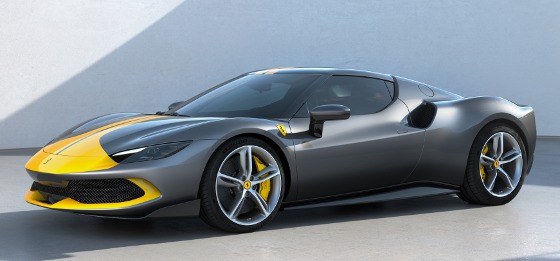
If expensive, sporty little coupes get your motor running, Ferrari has an exciting new entry for your wish list. The 296 GTB is the company's first mid-rear-engine berlinetta that boasts a turbo V6 coupled with an electric motor to crank out 819 hp total for an exhilarating, high-end ride.
The 296 GTB (Gran Turismo Berlinetta) introduces a new engine type to flank the marque's multi-award-winning 8- and 12-cylinder power units: a new 654-hp 120° V6 coupled with an electric motor capable of delivering an additional 122 kW (165 hp). This is the first 6-cylinder engine installed on a road car sporting the Prancing Horse badge. Together, the system is capable of unleashing the full 819 hp. Max speed is 205 mph, and it will do 0 to 62 mph in 2.9 sec.
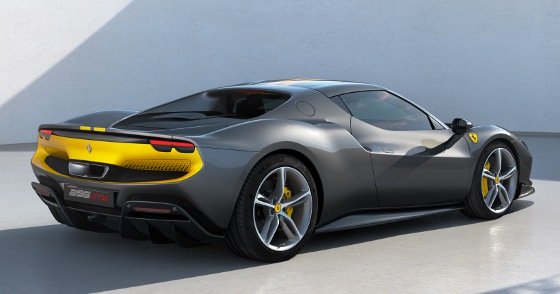
The new V6 has been designed and engineered from a clean sheet by Ferrari's engineers specifically for this model and is the first Ferrari to feature the turbos installed inside the vee. Aside from bringing significant advantages in terms of packaging, lowering the center of gravity, and reducing engine mass, this particular architecture helps deliver extremely high levels of power.
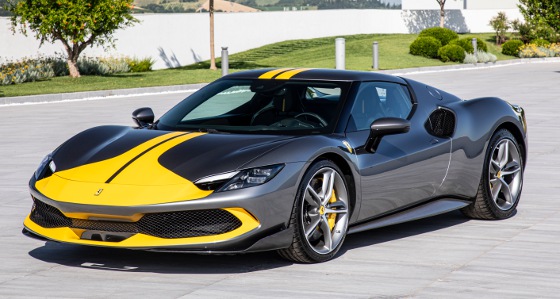
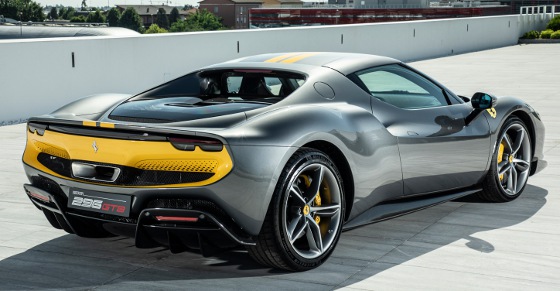
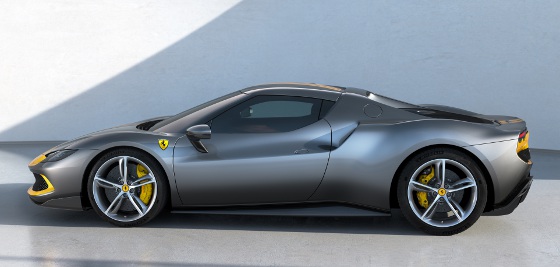
The architecture is also ideal in terms of combustion sequence and the integration of the intake plenums and the engine supports on the intake sides of the cylinder heads. The engine is lighter and more compact because of the elimination of the plenums and exterior supports, while the fluid dynamics benefit from the reduction in volumes, boosting intake efficiency. The 120° vee architecture, which offers more space between the cylinder banks than a 90° vee, meant the turbos could be installed centrally, thus significantly reducing the unit's overall size and the distance the air has to cover to arrive in the combustion chamber, maximizing the fluid dynamics and efficiency of the intake and exhaust line ducts.
The IHI turbochargers have been completely redesigned using higher performance alloys. This meant the maximum revs of the turbos could be increased to 180,000 rpm, with a consequent improvement in performance and boost efficiency.
In Ferrari engines, the intake plenum is normally located in the center of the vee. However, the V6 hails a paradigm shift in that regard: its plenums are on the side of the cylinder heads and are integrated with the support for the throttle valve. The light thermoplastic material used to make them keeps engine weight down. This solution boosts performance because of the shorter ducts and consequent fluid-dynamic detuning, in addition to reducing time-to-boost as a result of the high-pressure line's smaller volume.
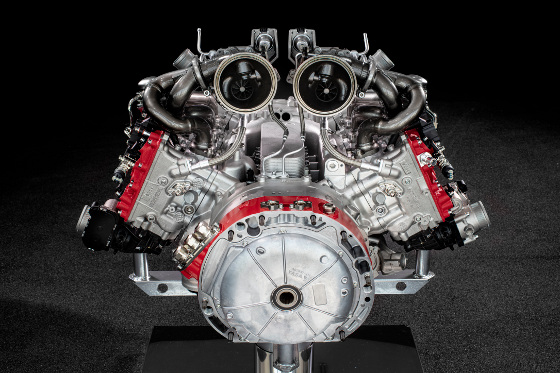
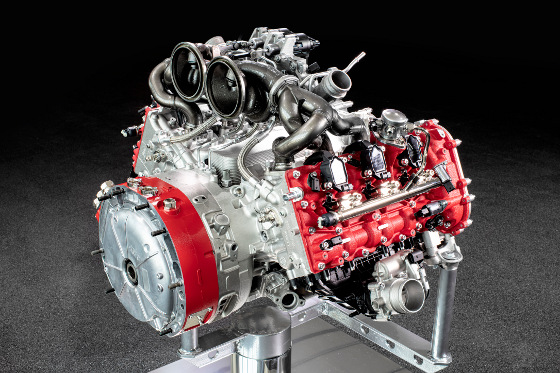
The new architecture also led to the development of a more linear exhaust line located in the upper part of the engine compartment. The shape of the exhaust reduces back pressure and contributes to boosting performance. The exhaust manifold and catalyzer housings are made entirely from Inconel, a steel-nickel alloy that reduces the weight of the exhaust and makes it more resistant to high temperatures.
Sound-wise, the 296 GTB rewrites the rulebook by harmoniously combining two characteristics that are normally diametrically opposed: the force of the turbos and the harmony of the high-frequency notes of a naturally-aspirated V12.
This is also the first ever Ferrari with a rear-wheel drive-only PHEV (Plug-in Hybrid Electric Vehicle) architecture in which the ICE is integrated with a rear-mounted electric motor derived from Formula 1 technology. The electric motor and ICE communicate via the Transition Manager Actuator (TMA), which allows them to be used together or decouples them to allow the electric motor to run solo.
The powertrain assembly comprises a V6 turbo ICE, with the 8-speed DCT and E-Diff, and the MGU-K (Motor Generator Unit, Kinetic) located between the engine and the gearbox. A clutch is set between the ICE and the electric motor to decouple them in electric-only eDrive mode. Lastly, there is a high-voltage battery and the inverter that controls the electric motors.
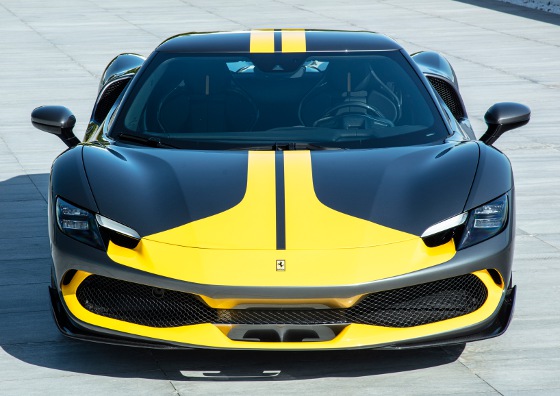
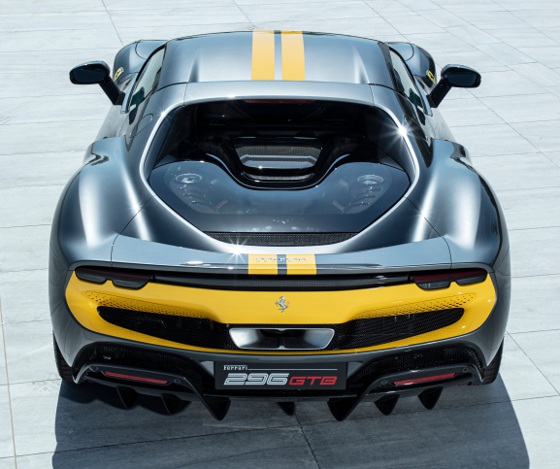
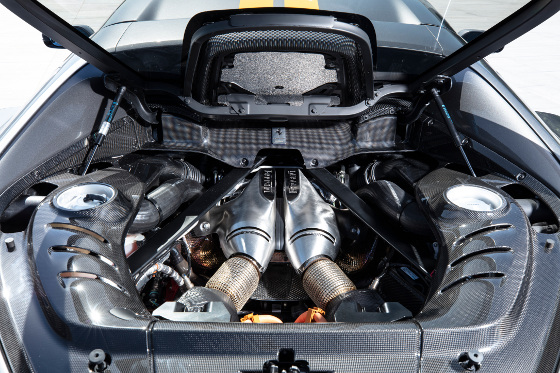
The MGU-K is a dual-rotor single-stator axial flux motor. Its compact size and its structure allowed the length of the powertrain to be reduced, which helped shorten the 296 GTB's wheelbase. The electric motor charges the high-voltage battery, turns on the ICE, supplies it with additional torque and power (up to 165 hp), and allows the car to be driven in all-electric eDrive mode. The MGU-K's improved design allows it to reach maximum torque of 315 Nm, around 20% more than previous applications.
The 7.45-kWh-capacity battery pack is located under the floor. To minimize volume and weight, the cooling system, structure, and fixing points are integrated into a single component. The cell modules contain 80 cells connected in series. Each Cell Supervisor Controller is installed directly in the modules to reduce volume and weight.
The PHEV system makes it a very usable car as well as cutting pedal response times to zero and delivering a 25-km range in all-electric eDrive mode. The car's compact dimensions and the introduction of innovative dynamic control systems as well as meticulously honed aero ensure that the driver will experience its astonishing agility and responsiveness to commands instantly.
The aero development work done on the 296 GTB means that even in low-drag configuration the car can deliver more downforce than previous applications. In high-downforce configuration, there is an additional 100 kg in downforce thanks to the active spoiler. The LaFerrari-inspired active spoiler integrated into the rear bumper allows the 296 GTB to generate a high level of rear downforce when required: the equivalent of a maximum of 360 kg at 250 km/h in high-downforce configuration with the Assetto Fiorano package, which is the main car shown in this article -- gray with yellow striping details (red car at the end is the standard model).
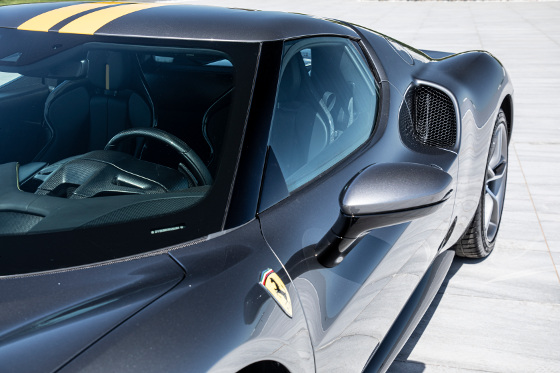
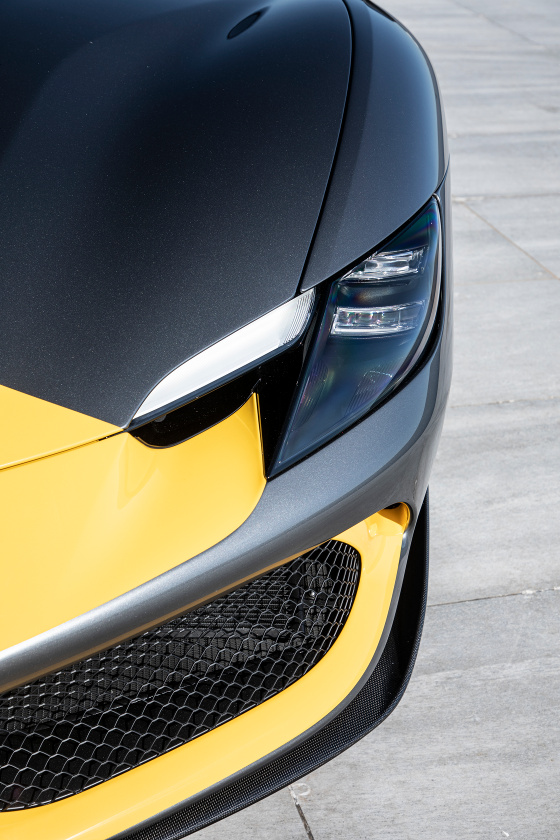
The ICE and the gearbox are cooled by two radiators installed at the front of the car, ahead of the front wheels, where there are also two condensers for the high-voltage battery cooling. The brake cooling system was developed around the Aero callipers introduced on the SF90 Stradale with ventilation ducts integrated into their castings. This brake cooling concept requires a dedicated duct to correctly channel cool air coming in through the air intakes on the front bumper through the wheelarch. In the case of the 296 GTB, the intake has been integrated into the headlight design. Just below the daytime running light, on the inner section, an aperture connects the wing to the wheelarch via a duct running parallel to the chassis strut, thus providing the cool air to the brakes.
Overall, the car sports an extremely clean, elegant design in which all the performance-oriented elements meld effortlessly with the styling. One of the most recognizable aspects of the 296 GTB's design is its cabin, which has a visor-style windscreen that wraps around onto the side windows. The front volumes are very pure, clean, and extremely compact. The central single-grille styling theme has been given a new twist by reducing the height of the grille in the center.
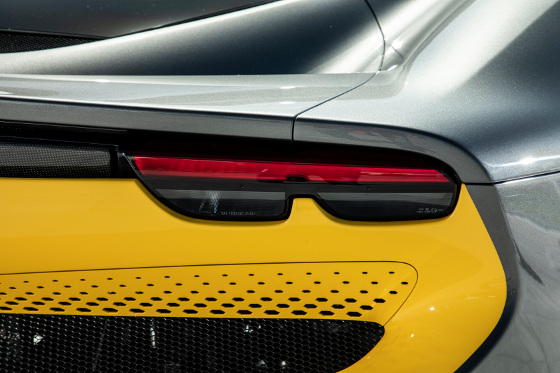
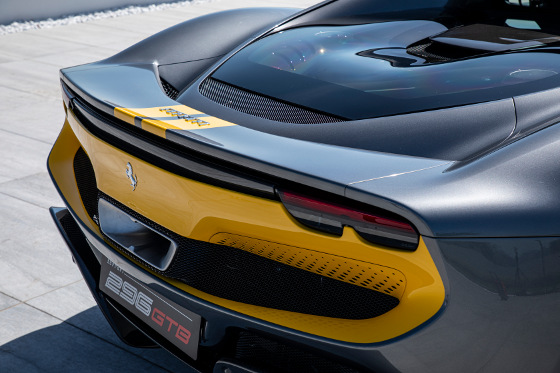
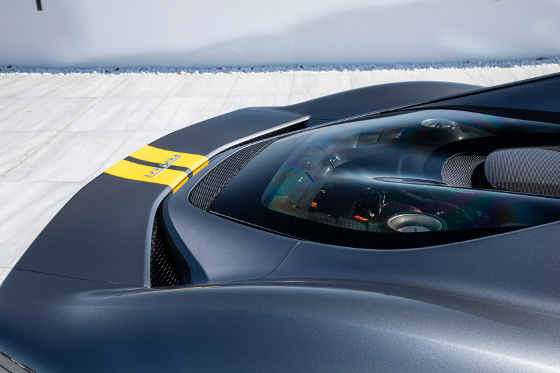
The upper surface of the ultramodern tail is dominated by an imposing flying buttress. At its base, it incorporates the engine bay cover, which has a unique, three-dimensional glass surface. The 296 GTB's other rear-end styling feature is its Kamm tail, a surface carved out of a solid volume, that underscores the car's compact volumes. The upper section of the tail also incorporates a horizontal element that incorporates the taillights and integrated retracting spoiler. With the lights off, a thin "black screen" line runs horizontally the entire width of the rear. When the taillights are on, two strips of light appear on either end of the rear. The designers chose to reinterpret the traditional twin round taillights by incorporating the other light functions in two semi-circular indents in the rear surface below the side lights.
VIDEO: Ferrari 296 GTB: Performance explained with Michael Leiters.
The 296 GTB features a single central exhaust tailpipe, which is a modern touch. It also sports a new alloy wheel with a twin-spoke design that accentuates the sculptural effect of the starburst shape. A carbon-fiber wheel option is available, which is 8 kg lighter than the forged counterpart that is standard and sets a whole new performance benchmark.
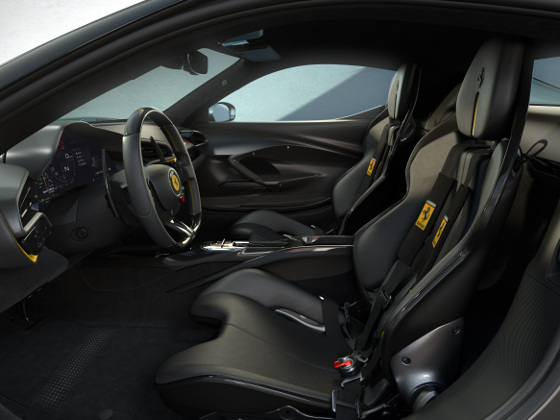
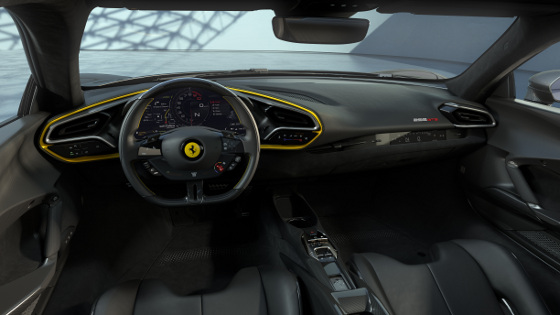
The cockpit was developed around the new concept of an entirely digital interface that Ferrari first debuted on the SF90 Stradale, but in the case of the 296 GTB, the design idea was to clothe technology in a sophisticated way. The main instrument cluster is set into a deep cleft carved out of the dashboard trim, and above it drivers get the extra benefit of a Head Up Display. The passenger side is very minimalistic, with a small passenger-side display. Italian leather is everywhere.
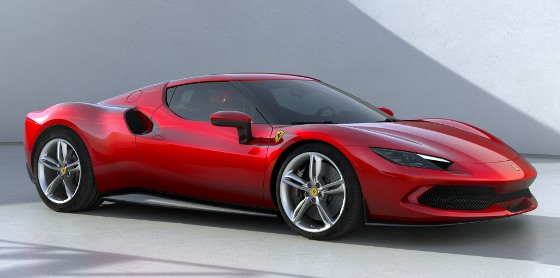
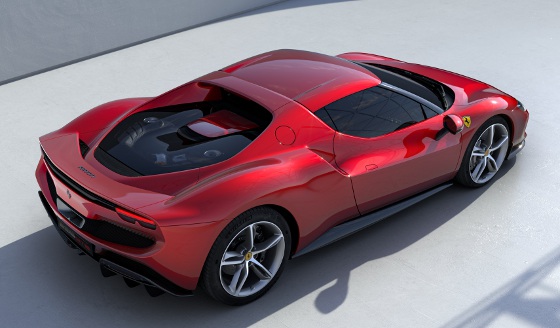
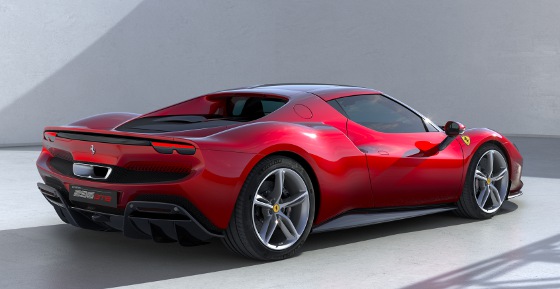
The 296 GTB Assetto Fiorano package includes special GT racing-derived adjustable Multimatic shock absorbers optimized for track use, high-downforce carbon fiber appendages on the front bumper that can deliver an additional 10 kg of downforce, a Lexan rear screen, and more extensive use of lightweight materials such as carbon-fiber for both cabin and exterior.
Ferrari did not release pricing. Since this is a brand new model, it is really up in the air. Rumors have the 296 GTB starting anywhere from $250,000 to $320,000, with the Assetto Fiorano package adding $40,000 or so to the price.
Source: Ferrari
Published August 2021
Rate this article
View our terms of use and privacy policy
